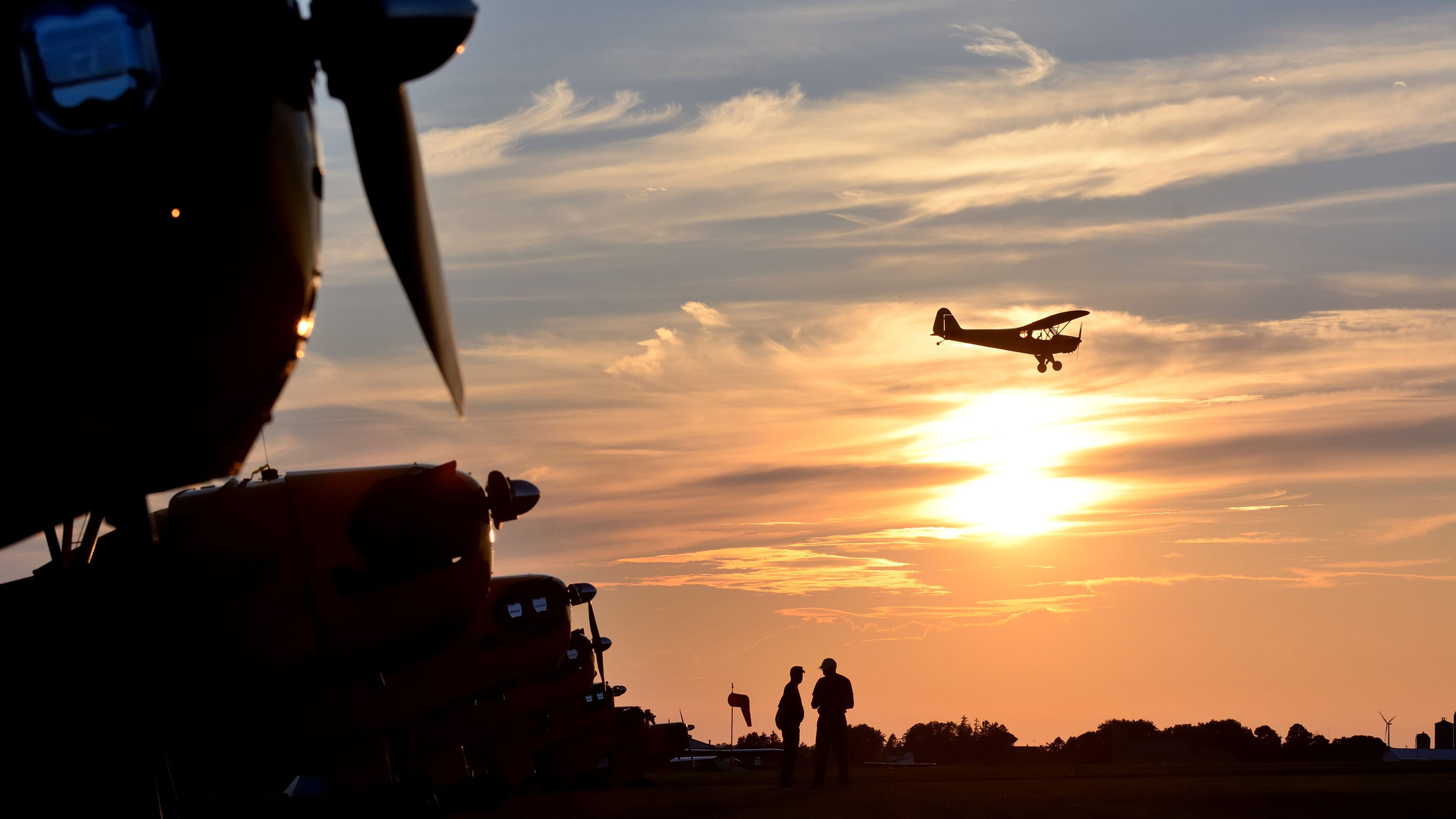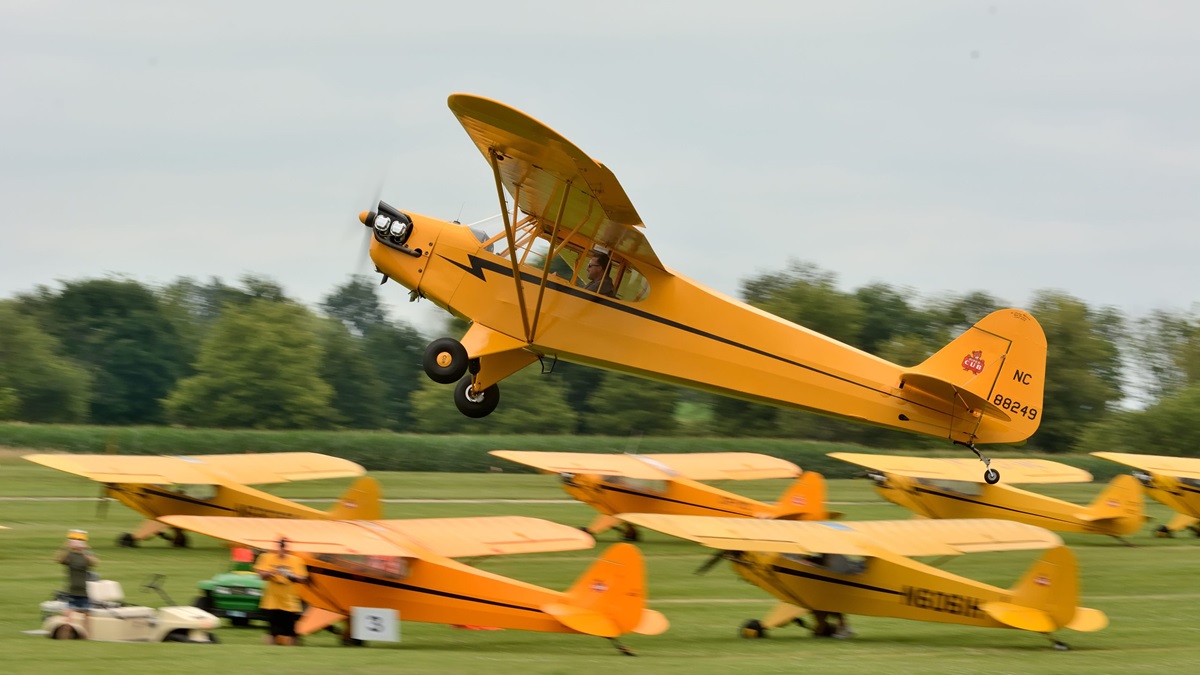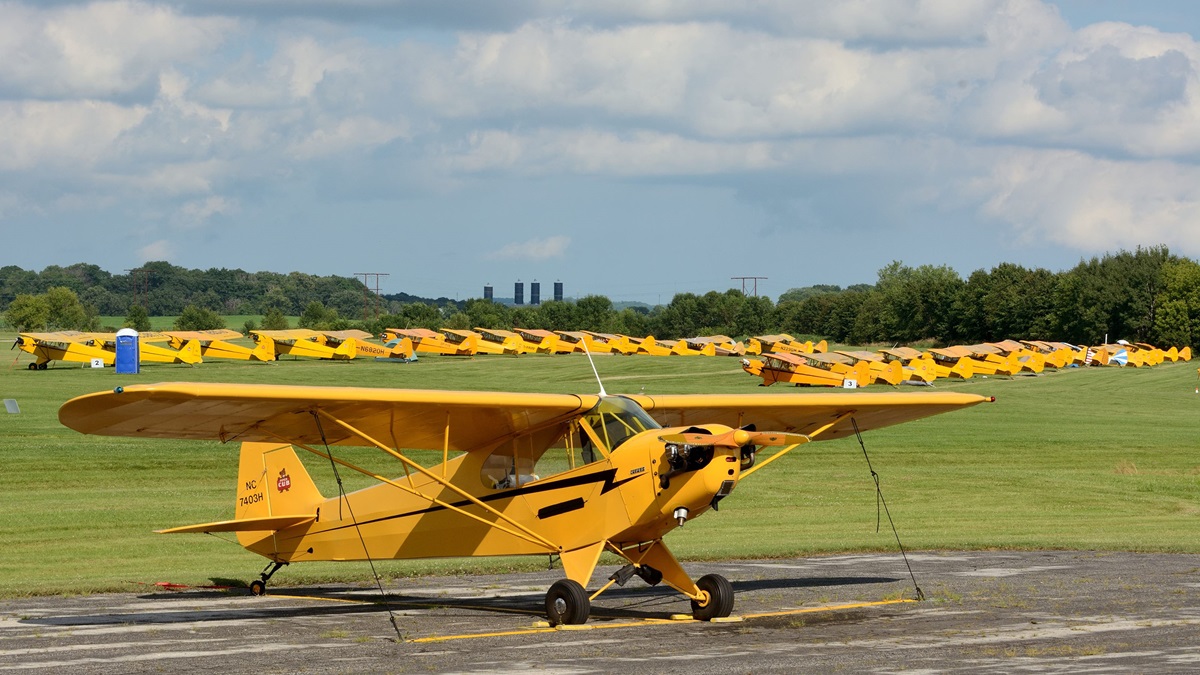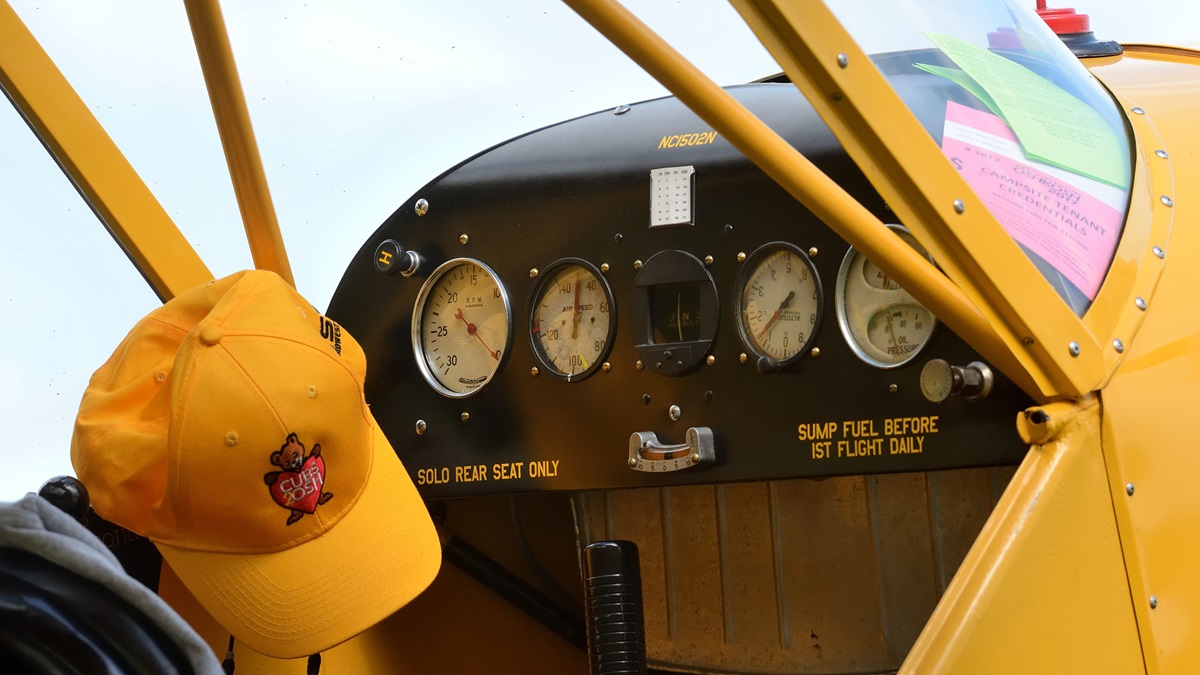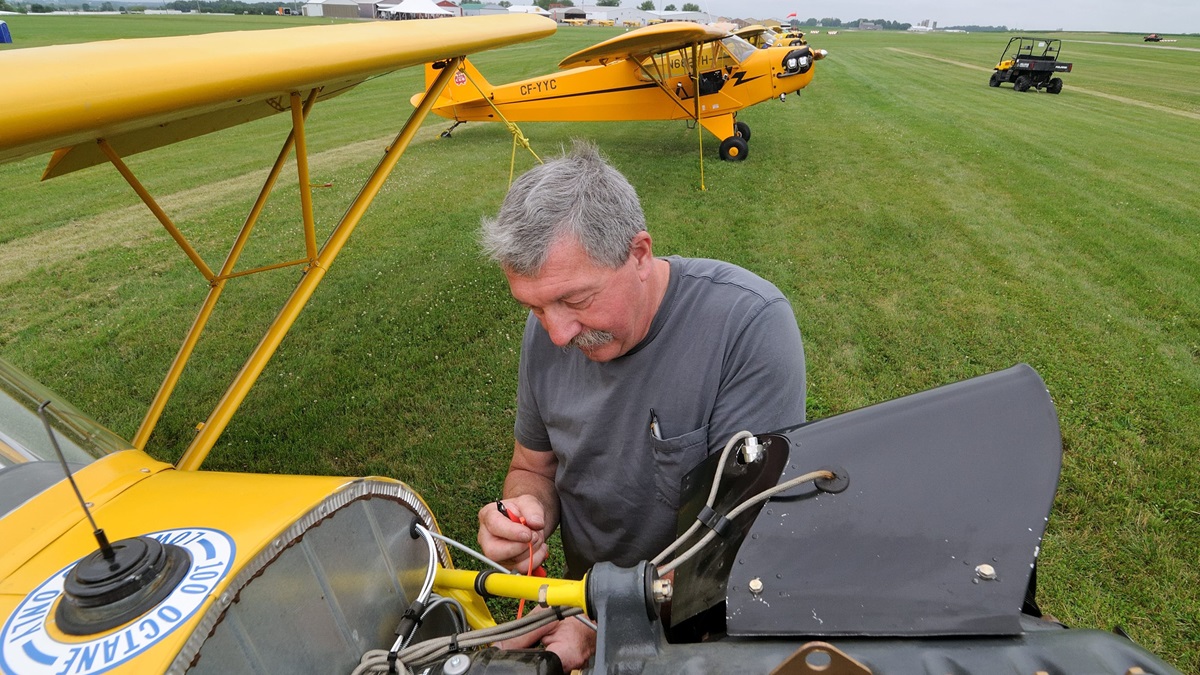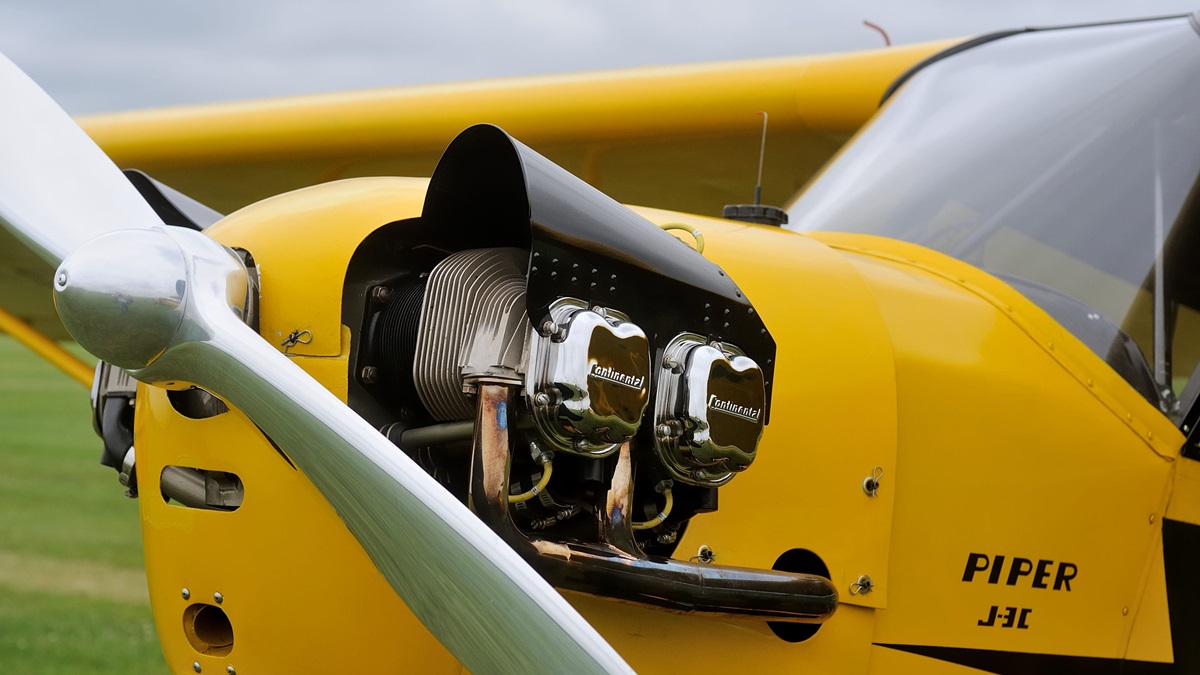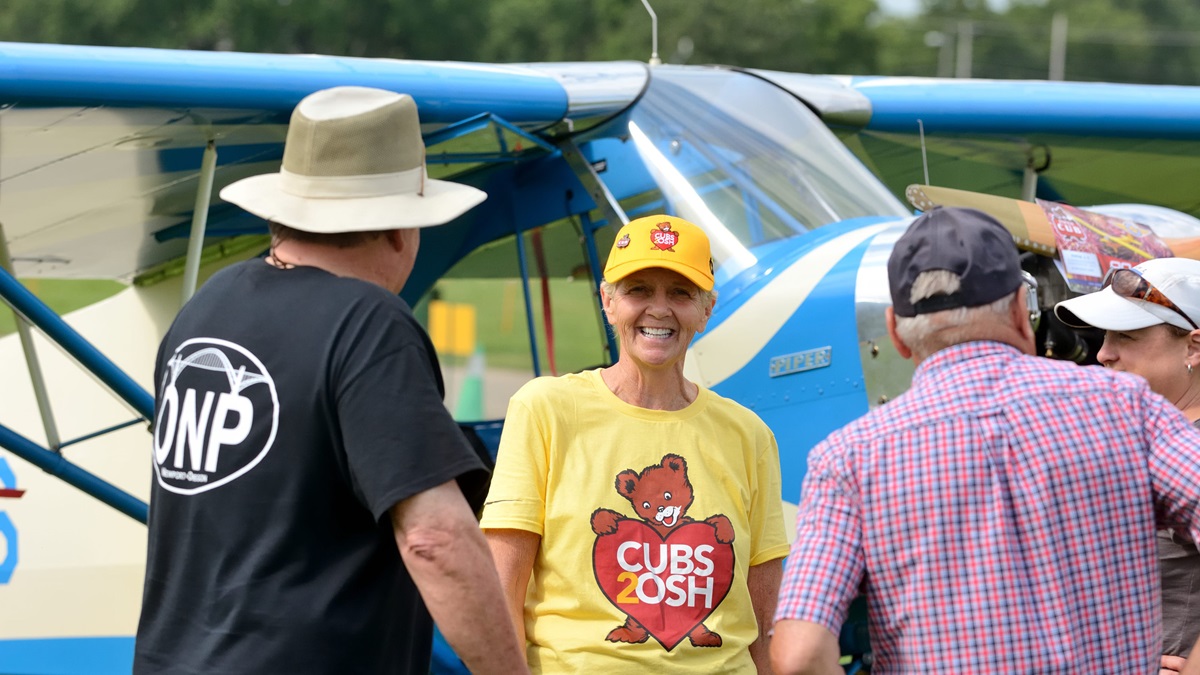Cub owners celebrate 80 years
J-3s fly from Hartford, Wisconsin, to Oshkosh
For the first Cubs to Oshkosh event five years ago, to celebrate the seventy-fifth anniversary of the iconic Piper Cub on July 22, 2012, the weather was mostly sunny—with temperatures topping 100 degrees Fahrenheit. Leading up to the eightieth anniversary event on Sunday, July 23, however, the weather was much cooler—and a lot wetter, stopping some pilots no more than 30 miles away from Hartford, Wisconsin, and causing others to reverse course while still hundreds of miles away.
Although Cubs 2 Oshkosh organizers were hoping for 80 Piper Cubs to gather at Hartford Municipal Airport by July 22, before departing early on July 23 for EAA AirVenture at Wittman Regional Airport in Oshkosh—and advance registrations supported that quantity—a total of 43 Cubs made the journey. Low clouds lifted early in the afternoon of July 22, allowing a late influx of arrivals to Hartford.
At AirVenture, the Cubs are parked together along the flightline on rows 67 to 74, and most pilots were planning to stay most of the week—although as cross-country travelers in an airplane like the Cub, they’ll also start looking at the weather a few days ahead of their planned departure, in case an earlier departure needs to be considered.

Organizers were pleased with the number of aircraft that made it to Hartford. “That’s a very good turnout, especially considering how poor the weather’s been the last couple of days,” said Steve Krog, who operates the Cub Club as well as the Cub Air Flight LLC flight school at Hartford.
Organizing a repeat wasn’t too difficult, Krog said, adding that five years ago, there was some reluctance to allow a mass arrival of very slow-flying tailwheel aircraft. “It went so smooth five years ago, they couldn’t believe it,” he noted.
The Cub arrival was not the only such event complicated by weather. At 1:06 p.m. local time on July 22, EAA Tweeted, “Bonanzas delayed by weather, no update at this time.”
Glen Tinckler of Calgary, Alberta, Canada, flew to Wisconsin for the event with two other Canadian Cub owners. He said the trip to Hartford took almost 19 flight hours.
Tinckler is a new pilot who has owned his 1947 Cub for two years. “I just got my license in it last fall, so this is hands-down the most cross-country flying I’ve done,” said Tinckler, who now has about 130 hours in the airplane.
“I used to fly in a Cub with my dad, when I was 10 years old,” and because of that, Tinckler had always wanted to learn to fly in a Cub. “It just took me a while to follow through.”
His dad is now in his 80s and stopped flying a few years ago, but Tinckler enjoys taking him aloft when he can—although his dad lives in another province, so flying him becomes a special occasion. “That’s quite fun. It’s like it’s come full circle.”
The first J-3 was built in Piper’s Lock Haven, Pennsylvania, plant on October 8, 1937, and likely would have made its first half-hour test flight that Friday—or soon thereafter, if it was finished late in the day. Look for an article on the eightieth anniversary event in an upcoming issue of AOPA Pilot.
